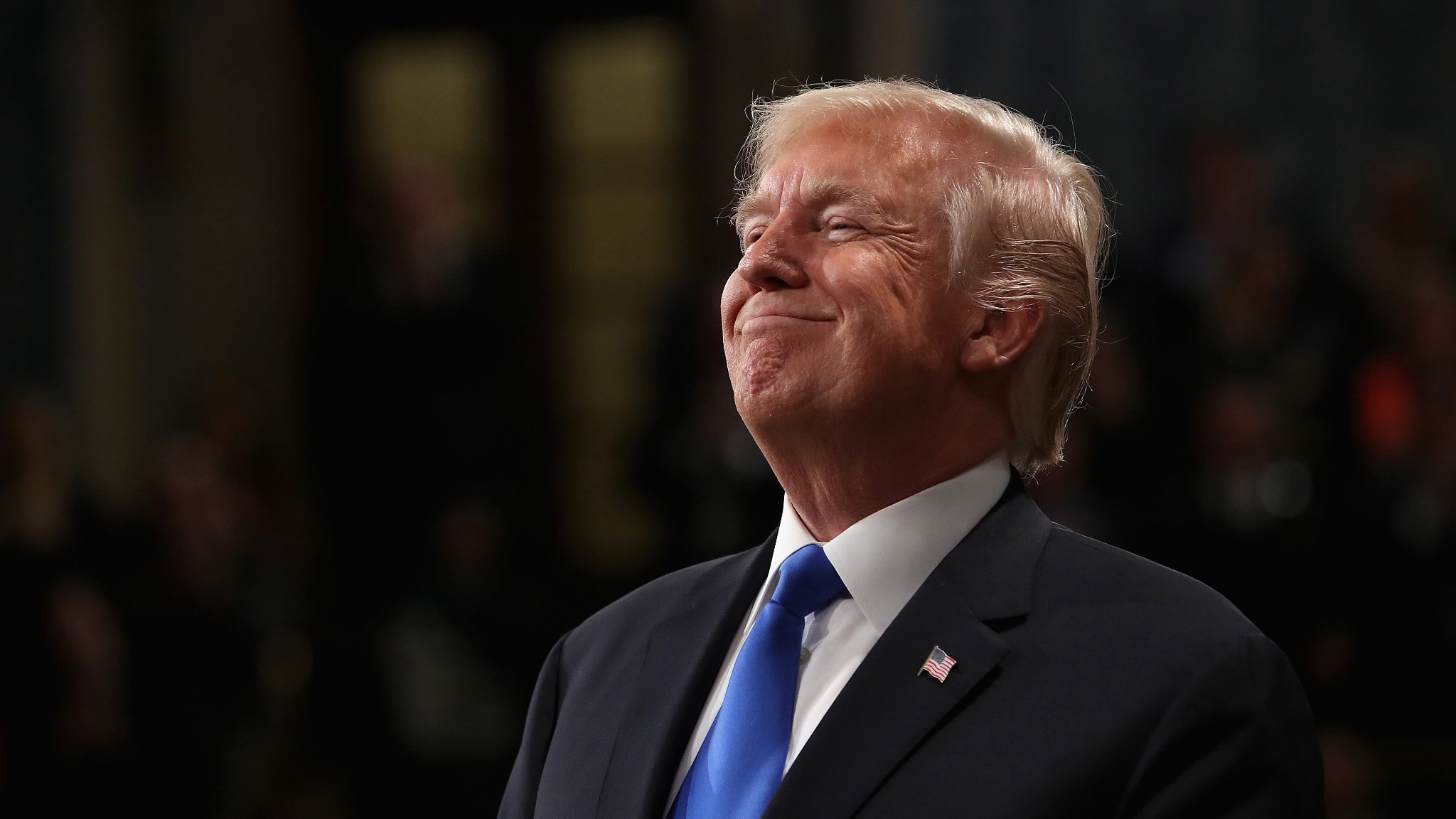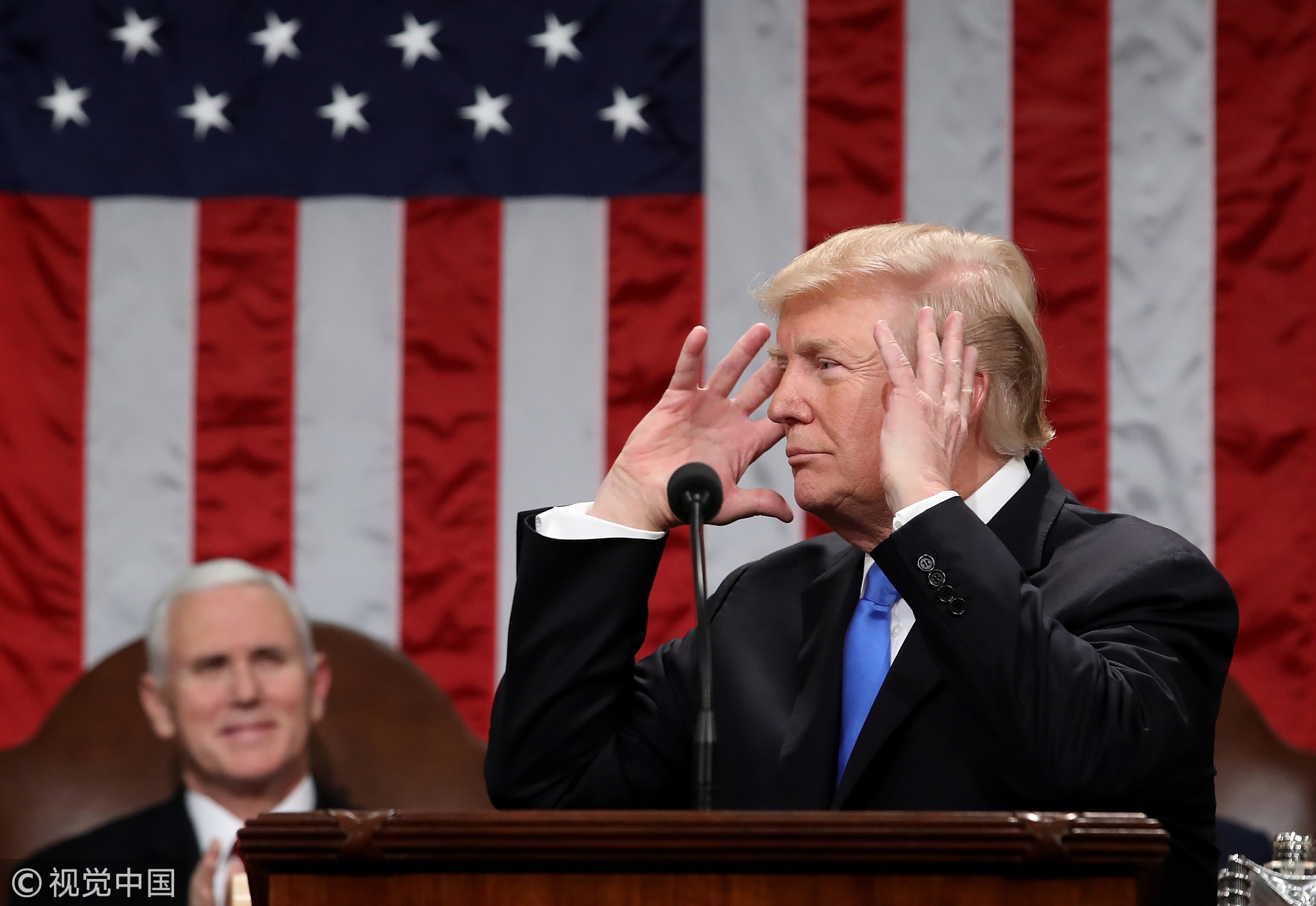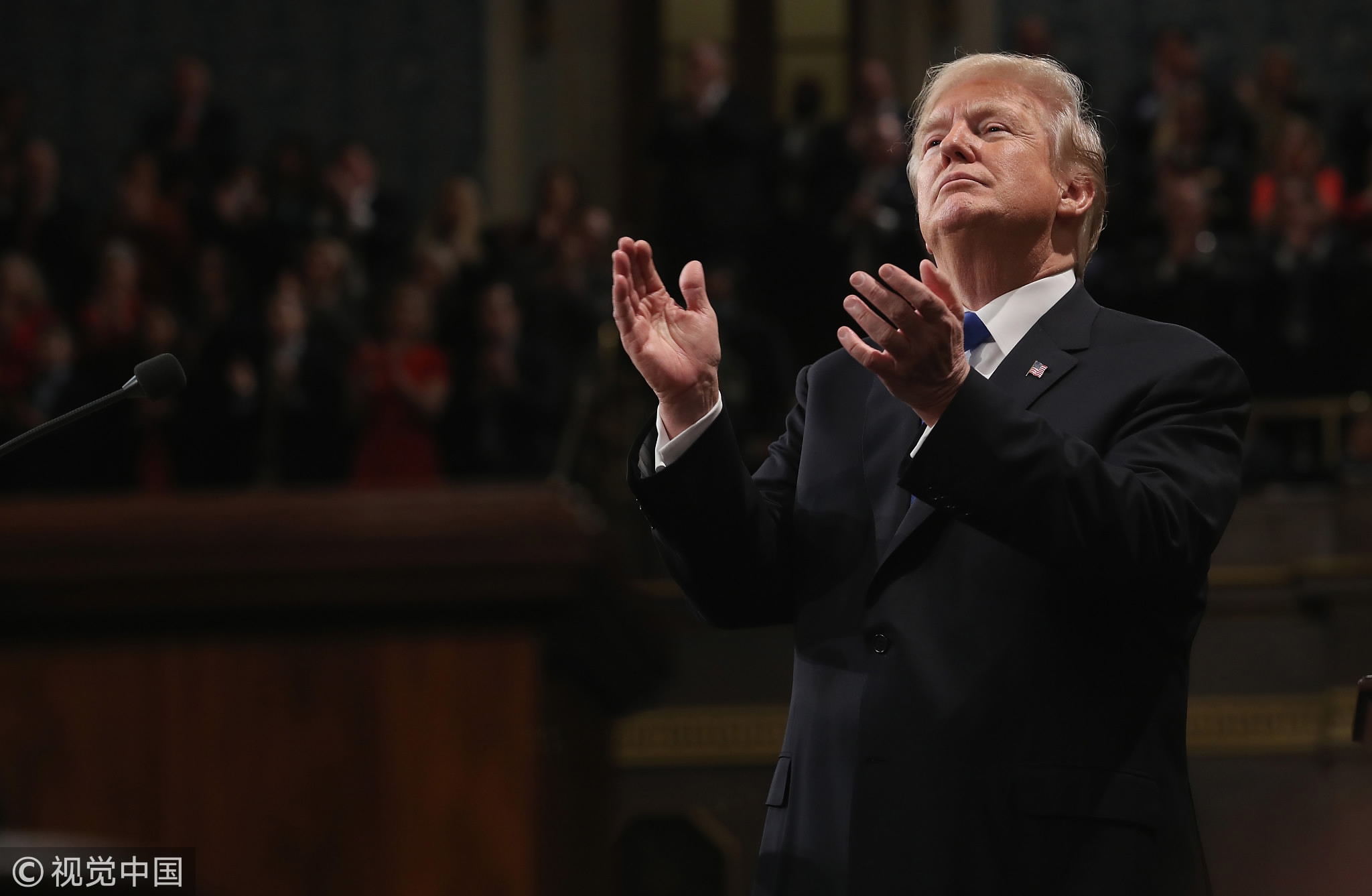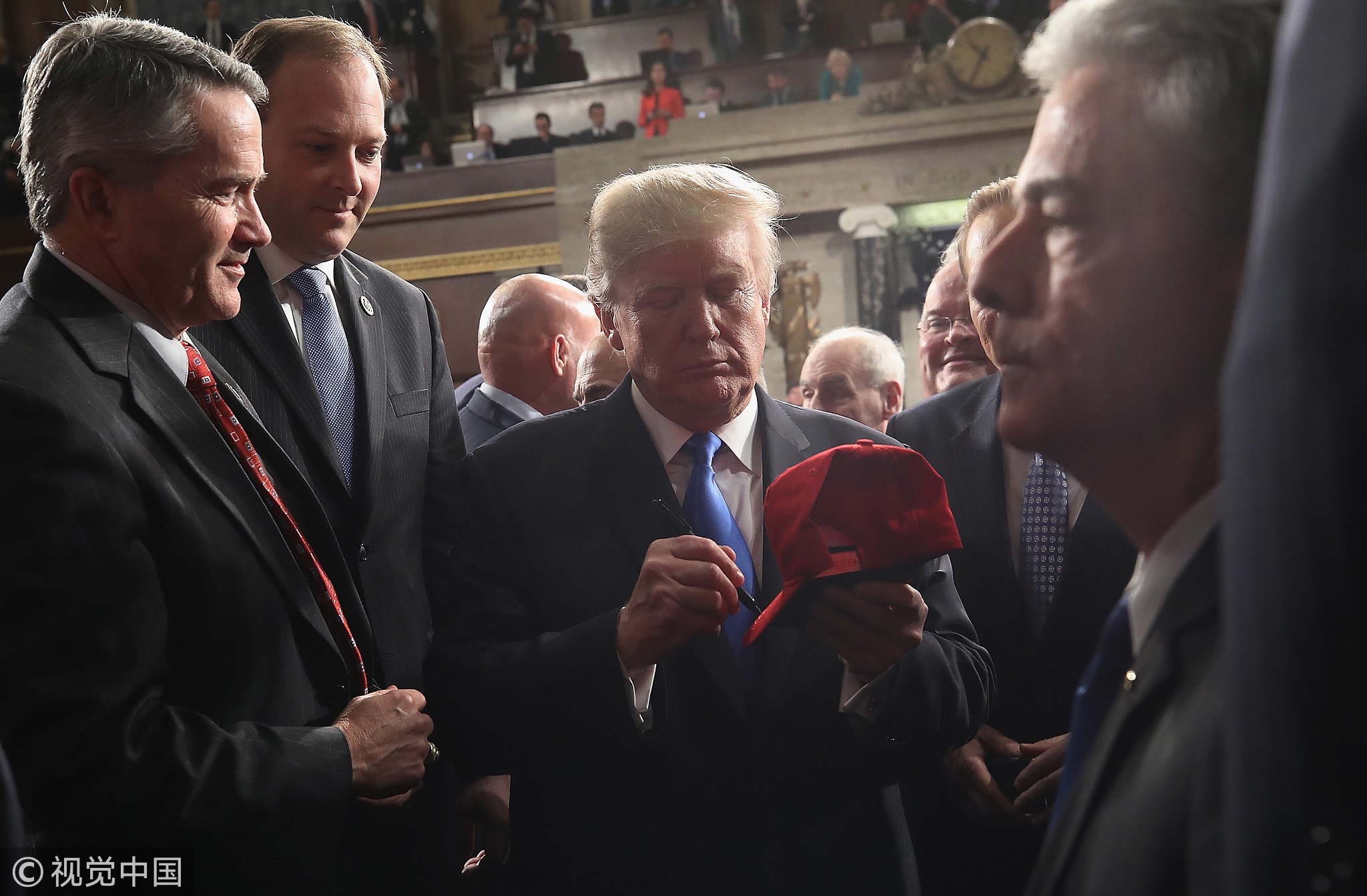
Opinions
22:55, 31-Jan-2018
Opinion: Trump taking credit where credit is due?
Guest commentary by James Rae

President Donald Trump has historically low popularity, is despised by the mainstream media, and faces enormous domestic discord as demographic changes alter the American identity. He is reviled by all Democrats and quite a few Republicans; most of his agenda has stalled, rumors and palace intrigue dominate the White House as the Russia investigation still looms and the #MeToo movement could yet ensnare the president’s past.
Yet on Jan. 30 2018, Mr. Trump delivered a serious and measured speech in his first State of the Union to Congress. The speech was well crafted, connecting most of Mr. Trump’s agenda with more inspiring language than in the inaugural address of a year ago. Both his tone and the content were more optimistic and positive than much of his public persona. Indeed, his emphasis on the "people" and eschewing references to "I" gave the event a more purposeful tenor.

US President Donald Trump gestures while delivering a State of the Union address to a joint session of Congress at the US Capitol in Washington, DC, Jan. 30, 2018. /VCG Photo
US President Donald Trump gestures while delivering a State of the Union address to a joint session of Congress at the US Capitol in Washington, DC, Jan. 30, 2018. /VCG Photo
The statement forcefully delivered a coherent message of conservative priorities and accomplishments and offers Republicans some hope for defending contested seats in the 2018 midterm congressional elections. For this most unconventional politician, the event was fairly unsurprising and followed the typical approach of past presidential addresses, reading scripted remarks from a teleprompter to an adoring half of the chamber while the other side decides whether to join in the applause (for unifying national causes like the military), demonstrate disdain or indifference (toward opposing ideological and partisan issues), or actively show hostility with booing or jeers (on issues of identity politics), while introducing the American public to a few ordinary people who represent a particular element of the speech (soldiers, firefighters, police officers, inspired children, heroic defectors from the DPRK, etc.)
Much of the speech dealt with policy accomplishments, real or imagined. Mr. Trump offered a rather specific plan to fix immigration that included legalizing "Dreamers" who came to the United States as young children, while completing his defense of the border and expelling undesirables, particularly emphasizing the American street gang Mara Salvatrucha (MS-13), an especially violent group with roots in the Salvadoran immigrant community. Whereas Mr. Trump found that open borders have brought drugs and gangs and low wage workers harming native American workers, he promised to defend those citizens of the United States, the average person, since in one of the better lines of the speech despite its contemptuous underlying message, "Americans are dreamers too."

US President Donald Trump applauds while delivering a State of the Union address to a joint session of Congress at the US Capitol in Washington, DC, US, Jan. 30, 2018. /VCG Photo
US President Donald Trump applauds while delivering a State of the Union address to a joint session of Congress at the US Capitol in Washington, DC, US, Jan. 30, 2018. /VCG Photo
He also moderated some of the harsher rhetoric on hot button issues like immigration, while attempting to find common ground in a general reading of American history and symbolism. Here, Mr. Trump more artfully connected his campaign slogan to "make America great again" with the opportunity for a "new American moment" if everyone gets to work, with the familiar bromide that Americans "can do anything." He offered an ode to past American greatness and renowned landmarks, highlighting religious faith, family values, and the flag while referencing beloved historical figures like George Washington, Thomas Jefferson, and Martin Luther King linked in their commitment to freedom, leading to a brief chant of “U-S-A” by his acolytes. This simple-minded patriotism plays well on television, both with the general public and among his core supporters.

US President Donald Trump, center, signs a hat after delivering a State of the Union address to a joint session of Congress at the US Capitol in Washington, DC, US, Jan. 30, 2018. /VCG Photo
US President Donald Trump, center, signs a hat after delivering a State of the Union address to a joint session of Congress at the US Capitol in Washington, DC, US, Jan. 30, 2018. /VCG Photo
In foreign affairs, the near defeat of ISIL was touted, along with championing the decision to soon move the location of the US embassy in Israel from Tel Aviv to Jerusalem, which has received near universal condemnation, and criticizing worldwide reaction by attacking the United Nations, a source of constant conservative animosity as symbol of intruding globalism. Cuba and Venezuela were denounced for their governments’ anti-freedom orientation, along with Iran (and former President Barack Obama’s nuclear deal), and finally the DPRK, the chief threat for the US that justifies reinvesting in America’s nuclear arsenal.
Reputedly, it was Mr. Trump’s particular fascination with nuclear weapons that led his Secretary of State Rex Tillerson to question his competence in the summer of 2017. His protectionist priorities received relatively short shrift, other than bringing jobs back from Mexico to Michigan and calling for "fair and reciprocal" trade. China was omitted from the speech, and Mr. Trump’s team seems to be warming however tepidly to free trade. Mr. Trump’s priority for 2018 will be a 1.5 trillion US dollar infrastructure spending bill that will require Democratic support, and perhaps concluding the immigration bill that was torpedoed by his own recent remarks demeaning poor countries and their immigrants.
Overall the Trump presidency will likely rise or fall on the strength of its economic outcome, and much of the address rattled off accomplishments for everyday Americans: Corporate tax cuts, some middle-class relief, weakening Mr. Obama’s Affordable Care Act (ACA), growing jobs, and a stock market on a roll. Ironically, the risk of taking credit for market forces was apparent when the Dow Jones average fell over 350 points on the day of the speech.
(James Rae is a Fulbright Visiting Scholar at Beijing Foreign Studies University. The article reflects the author’s opinion, not necessarily the views of CGTN.)

SITEMAP
Copyright © 2018 CGTN. Beijing ICP prepared NO.16065310-3
Copyright © 2018 CGTN. Beijing ICP prepared NO.16065310-3